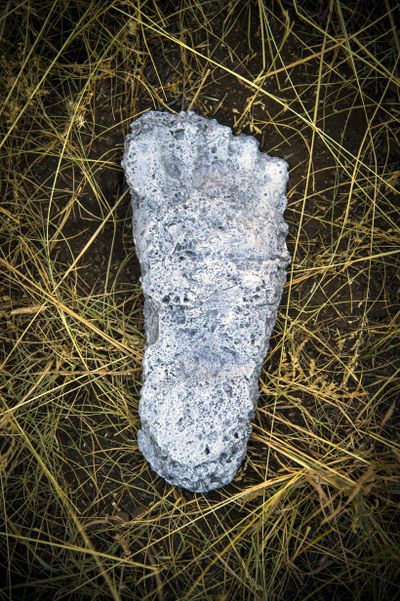Idaho State professor says FBI research dilutes evidence of bigfoot’s existence

For the pursuers of the elusive bigfoot, skin and hair samples belonging to a deer provided a dead end. Newly released FBI records detail a 1976 request by Peter C. Byrne, who submitted samples he thought belonged to the beast. An Idaho State University professor who researches bigfoot says this is a misdirection, and he has hair samples he is confident belong to the legend.
“It’s a tempest in a teapot,” said Jeff Meldrum, an anatomy and anthropology professor at ISU. “Just from that poor quality black-and-white image, you can tell it’s not primate hair. I could have told you on the basis of that photo alone that it was almost certainly ungulate.”
News like this is a disservice to the bountiful evidence that does exist, Meldrum said.
“Skeptics love it, but it diverts attention away from the more compelling evidence, like the hair that I’ve mentioned and all the other evidence,” Meldrum said. “The footprint evidence, the vocalizations, the photographic evidence, the continuing, ongoing eyewitness accounts by credible, reliable, less impressionable witnesses.”
In 2017, The Spokesman-Review tagged along with Cliff Barackman in one of his searches for sasquatch in Walla Walla. Barackman is best known for his Animal Planet show, “Finding Bigfoot,” which went off the air a little more than a year ago.
Reporter Abby Lynes provided a first-person account of her experience, and though Barackman did not make a believer of her, there was a moment when doubt crept in.
“It could have been anything – maybe another animal, a couple rocks falling or maybe I imagined it,” Lynes wrote. “No one else heard anything. But, in my mind, I’m sure. I heard something clap back, ever so faintly.”
Meldrum and Barackman – who are frequent collaborators on bigfoot research – will meet in Oregon this weekend to patrol areas where there have been sightings, with hope of collecting further evidence.
“(Barackman) has maintained a very level-headed, very grounded attitude and approach to the subject matter, so he and I are constantly sharing information that comes to our attention,” Meldrum said.
Meldrum said he currently has bigfoot hair samples that are clearly primate, but are distinct enough in their variations that they could not be human hair. Another clue? They’ve never been cut.
“Just about every person alive out there has had a haircut at some point after a few months or years, at least in their lifetime,” Meldrum said. “And so that cut end, unless it’s so split or frayed that it’s no longer distinguishable, will have a very obvious signature cut pattern.”
In Meldrum’s book “Sasquatch: Legend Meets Science,” an entire chapter is devoted to hair analysis. The problem with Meldrum’s current hair samples is they do not provide the entire mitochondrial genome. The cost to do this work is exorbitant. To make matters worse, it’s difficult to find a lab that will run the proper tests on samples.
“In academia, it’s publish or perish, and if this doesn’t produce a publishable result that’s time they’ve lost, that’s productivity they’re missing out on,” Meldrum said. “So they’re not willing to take the risk, especially given the controversy surrounding the subject and the credibility of their laboratory.”
Meldrum hoped to address this problem on his trek with Barackman, by obtaining environmental DNA.
“We’re trying to put together a project to do some systematic survey using environmental DNA techniques to sample soil and water in areas where reports have come from, footprints and so forth,” Meldrum said. “It’ll be an interesting test case. There is no precedent for recognizing a new species on the basis of DNA sequence alone.”
Meldrum does leave room for doubt, but he feels fairly certain bigfoot is out there.
“I can’t say I’m 100%,” Meldrum said. “That wouldn’t be an honest position because we don’t have the conclusive evidence … but I wouldn’t have dedicated much of my career, my reputation on this question if I wasn’t very early on quite convinced on the basis of the evidence I had examined.”